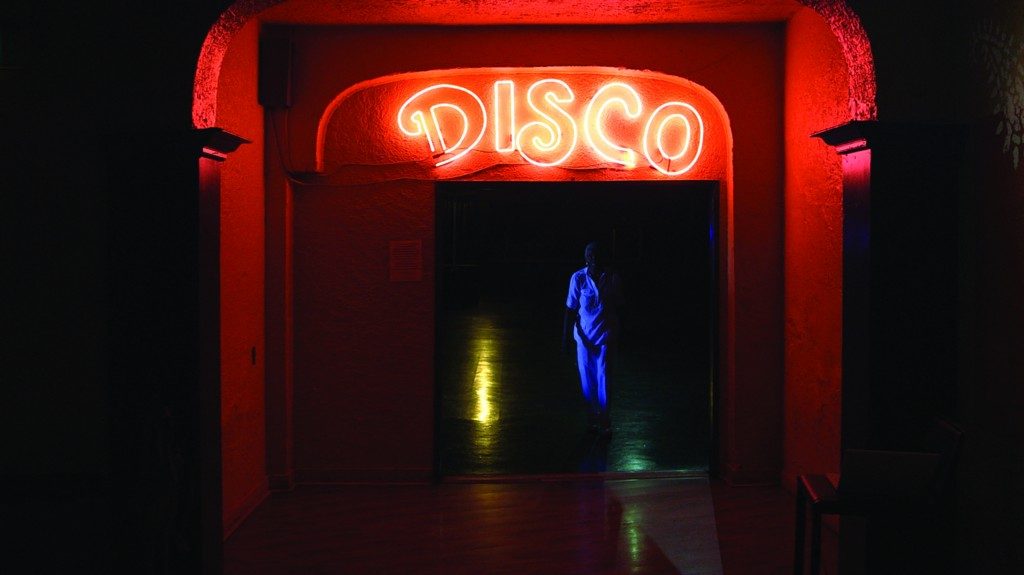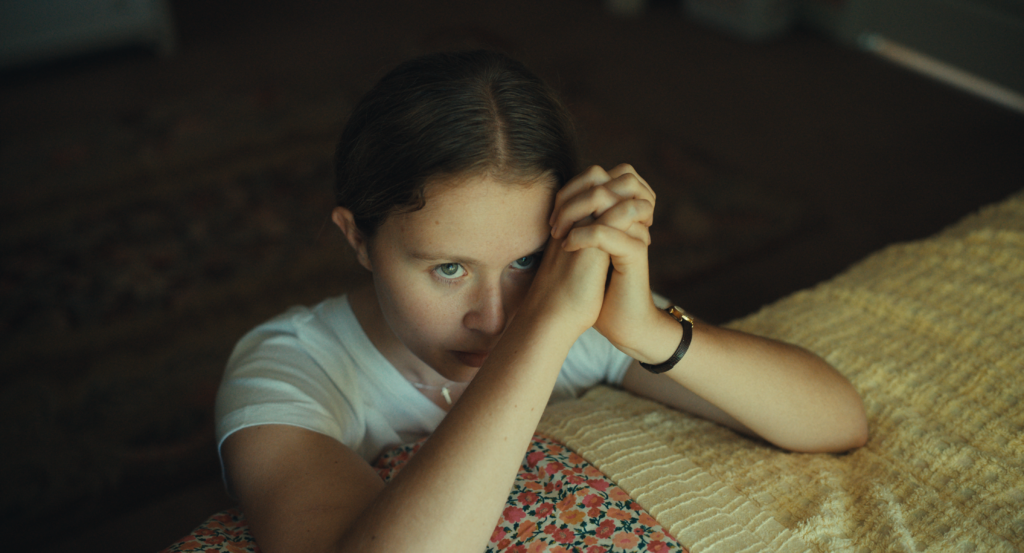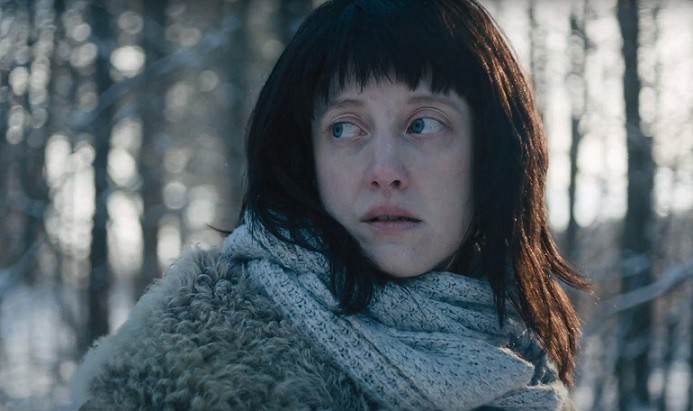C. Fitz is a creator, director, writer, and producer, as well as a television and marketing veteran. Her previous films include “Rancid,” “No More Roses,” “ShowGirls, Provincetown, MA,” and “A Tribute to Jewel Thais-Williams.” As a filmmaker, Fitz often shines a light on and celebrates the real heroes in our world.
“Jewel’s Catch One” will premiere at the 2016 BFI London Film Festival on October 8.
W&H: Describe the film for us in your own words.
CF: The film is a musical ride through history from the exclusive point-of-view of a woman that helped change the course of our country by breaking down racial, social, and cultural barriers. Over four decades are sewn together with high detailed-shot dance footage that gives the film its own unique visual experience.
Jewel Thais-Williams relentlessly opened her arms to do more for her community, and, still to this day, has not stopped serving those that need her. She was the only voice for black people, and especially gay black people, in the ’80s and ’90s that needed a safe haven, as well as healing and funding. Somehow, while building a nightclub, Catch One, she started a revolution by protecting her community that was grossly under-served by city and national authorities.
She started organizations like the AIDS Minority Project, Rue’s House — a shelter for women with AIDS — and The Village Health Foundation.
“Jewel’s Catch One” captures history, music, fashion, targeted police harassment over decades, and one hero’s legacy — a woman whose shoulders we all stand on.
Looking back, I wonder if her story would ever have been told outside the walls of LA. Hopefully, [with] this documentary, Jewel can inspire future generations — all colors, everywhere — to stand up to hate and do more in their own corner of the world.
W&H: What drew you to this story?
CF: I met Jewel in April 2010. I donated my services to direct a short showcase piece on her as she was being honored for her community service. After doing some research, I started to uncover a massive story. This one woman was the pinnacle of changing laws and helping a black community that was being ignored, bullied, and overlooked for decades. Once I learned more about her and the Catch One stories that touched thousands of individuals, I knew there was no question that I had to do the work to capture the history of Jewel’s life and Catch One.
Of course the four decades of music and stories from Catch One drew me in at first but then — after you uncover that this one woman was opening the doors to everyone back in the ’80s and ’90s and dealing with police harassment, the AIDS crisis killing off her patrons, arson, and, at times, pure hatred towards her and her friends and family — I realized this was an unwritten textbook that needed to be shared with a larger audience. Jewel is a national hero that did everything she possibly could to provide a safe space and healing for her neighbors, patrons, and her community.
W&H: What do you want people to think about when they are leaving the theater?
CF: After watching our film, I’ve always wanted people to feel inspired and empowered that they can do more in their corner of the planet, like Jewel did, and that they can help change history right now. It’s no accident we wrapped the picture the day before [the] Orlando [Pulse shooting] happened.
Jewel is an important voice and inspirational elder today. By hearing her story of how she overcame such hatred that still exists today, we all might learn something. Jewel did the work and this film is a gift to inspire people to do more, get talking, and take action.
W&H: What was the biggest challenge in making the film?
CF: The editing. We had such a volume of archival photos and footage that our system crashed often and we lost a lot of editing and time. Once we started the edit, due to budget constraints, we needed to push forward. So, technically, the editing was the hardest, however, the number one most difficult part of making this film was watching the cutting room floor grow.
There were so many beautiful stories and historical benchmarks that Jewel’s story took us through that we had to cut to stay within the 90-minute documentary format. We had six years of collecting and researching to manage, and it was very difficult excluding personal stories from Catch One and Jewel’s clinic.
W&H: How did you get your film funded? (Is it a studio film, a crowd sourced film, somewhere in between?) Share some insights into how you got the film made.
CF: I just started it out of my own pocket because it needed to be done and, at the time, I was working as a producer/director in advertising and social media — so I definitely called in some favors. A talented crew and editing in my kitchen for six months helped cut costs and get it completed. I also had some great producers like Carmen Quiros and Pat Branch, and consulting producer Tracy Mercer, that went the distance over several years with me. Our talent of local storytellers plus our stars: Sharon Stone, Thelma Houston, CCH Pounder, Thea Austin, Bonnie Pointer, Representative Maxine Waters, Sandra Bernhard, and Evelyn “Champagne” King, to name a few, were generous with their time and had incredible, unique Catch stories! We pulled in what we could to get to the finish line. It was not easy.
We were mainly self-funded, had the support of one investor, plus a few gifts from our friends. We never thought it would take six-and-a-half years. Recently, to help with our film’s expenses and to try to reach a larger audience, we started a CrowdRise film and clinic awareness campaign to help us get the film out to as many audiences as we can, since we applied what we had to finishing the film — part of the donation goes to Jewel’s new health clinic and is tax deductible.
W&H: What does it mean for you to have your film play at LFF?
CF: Everything! I was in a taxi in New York City when I got the call from Kate Taylor officially telling me we had been accepted to the festival. I screamed so loud I may have blown the eardrums off that poor cab driver and Kate!
We are excited for our perfectly placed screenings, our disco-themed party after our film, and are thrilled to go to the Gala of this incredibly prestigious international film festival!
I am so proud and elated that the London BFI programmers truly appreciated the music in my film and chose us to be in the Sonic program. We are among giants in the industry and are so honored to be a part of it all.
W&H: What’s the best and worst advice you’ve received?
CF: Worst advice: That the film should be less about Jewel and more about the club. I had a master plan to draw people in using the club and the music, but, in the end, show them that one person can make a difference in any corner of the world by watching Jewel making a difference over 42 years. Early on, some advice was clearly led by the desire to just see a disco club documentary. However, in the shadow of Orlando, I’m glad I stuck to my plan. Her life story is larger then the club’s and more important to tell today. I hope her voice is a beacon to combating the rampant hate in the world today.
Best advice: “Keep going,” which I heard over and over from those few in my life that really got my vision, and believed in the story or simply in me to do it justice.
W&H: What advice do you have for other female directors?
CF: Help each other, hire women when you can, and reach out to one another for advice. I feel we could be stronger by supporting other females in every position on the crew. The cycle of females being a minority in the director’s chair will continue until we help break it by our actions, not just words.
W&H: Name your favorite woman-directed film and why.
CF: “Selma” by Ava DuVernay. It’s powerful, and such a huge film in so many ways — story, cast, history, politics. Ava crafted a history lesson into an exciting and important film. It’s hard to tell a story of such importance and have style and excitement. Most fall flat and only do one well. Ava shows us style and a technical passion in all the multiple platforms she directs in TV and film.
W&H: Have you seen opportunities for women filmmakers increase over the last year due to the increased attention paid to the issue? If someone asked you what you thought needed to be done to get women more opportunities to direct, what would be your answer?
CF: I think the movement is starting, but not by much. We have a long way to go.
I believe it starts at the top where the investors and studios are. We need to change their attitudes to believe that a female director can handle the big budgets and they can — and do — make quality films.
We need more boots-on-the-ground producers who are willing to support female directors and go after changing the minds of the studios and EPs. And, if I could push this point further, I would say these producers should also be hiring/mentoring more women throughout each film project so we are “growing” more opportunities for females in the industry.







